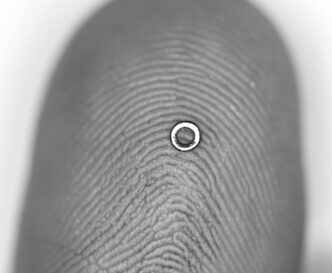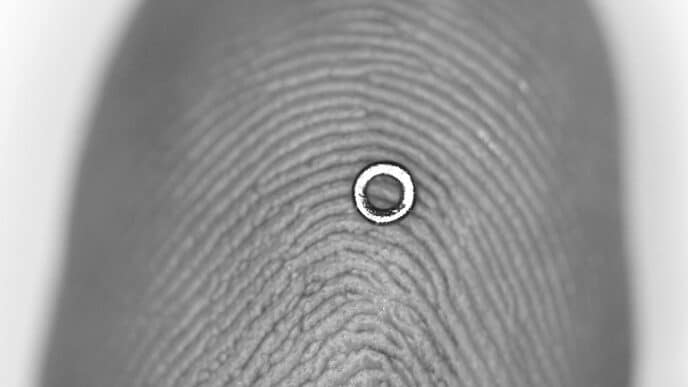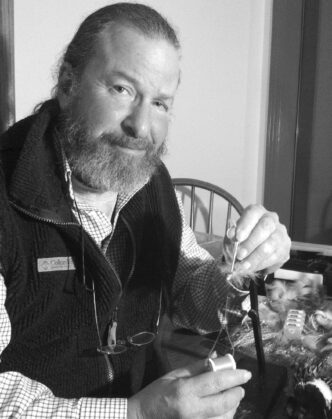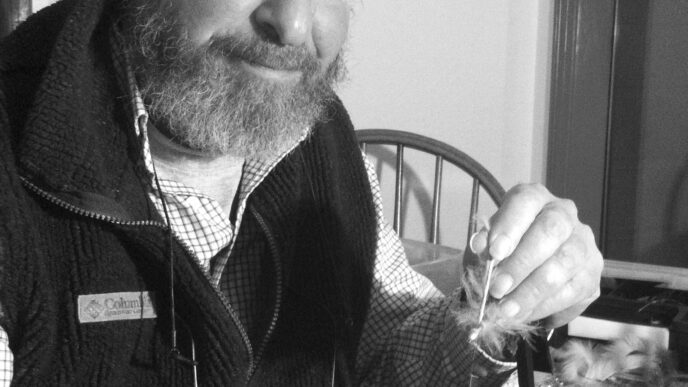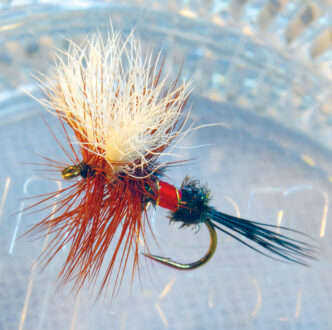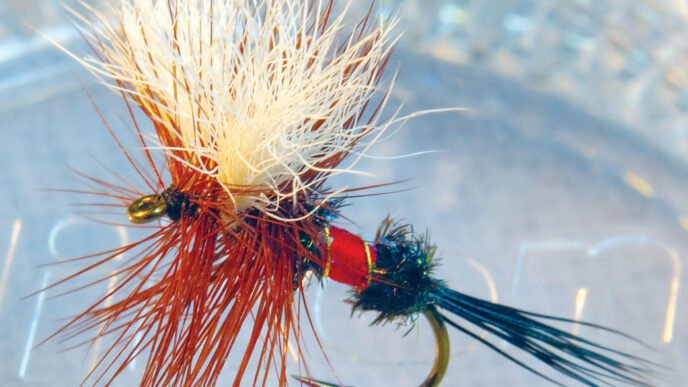Every three or four years comes a column I construct from almost unrelated subjects connected by segues that I pray or pretend will pull them together. There’s a theme in theory, but it may be a stretch.
This is one of those.
Less often, I launch a topic that seems hardly about fly fishing at all. When that’s the case, I try hard to convince you and the Editor — your proxy in the publication process — that at least it does so in spirit. Sometimes this works, but there’s peril in such presumptions: This is a fly-fishing column, however eccentric. While I’ve perused half a dozen books about angling that also proselytize politics and religion — smallmouths, sea trout, and redfish bring out the missionary in several authors — I’m sure we’ve preachers enough in the world. There’s so much to be said for knowing your place and staying there.
That said: comes occasionally a temptation made more powerful when you’ve written so long to readers you consider “sympathetic minds.” To whom you address questions not, in your mind anyway, rhetorical and whose real questions you answer when they ask, even when personal on occasion, partly because they’re prompted by the appearance of events and people that pass through these pages en route to, often, one hopes, a theme. Rarely, there’s even a sense that I owe answers, when I imagine I have them, or even information beyond how to tie an Arbor Knot.
This is one of those — a serious meander, the first of year 21, so it’s of legal age. Appropriately enough, maybe, age is what it’s about.
Like many other California fly fishers, I was sad to hear about Chuck Echer’s passing. Chuck was my first formal fishing instructor and showed humor and wit while hammering home his techniques. He also treated me as what I was in that class: an anomaly, as ignorant as any student about most of his curricula, but with 20 years of mainly clueless experience under my belt — an odd kind of novice who’d been seining ponds and streams since I taught myself to cast by watching Sandy Koufax pitch circa 1965.
Class lessons were engaging, but during lawn-casting sessions, my doubts came out. (Koufax was a lefty.) Chuck, charged with untangling a dozen purer tyros, stood beside me, silent as I committed marginally more advanced mistakes. “Sometimes,” I said, with significant frustration, “I still throw those tailing loops.”
I looked over to see him smiling wistfully. “Sometimes,” he said gently, “so do I.” Years later, I met Chuck again, at a smoker’s gulag outside a fly-fishing symposium. This wasn’t long after California Fly Fisher first came out, and the magazine was what he wanted to talk about. “Twenty years I’ve been waiting for our own,” he said, softly again, but this time serious as can be.
I hope he’ll say Hi to Marty Seldon for us.
Among “us,” I include those of who don’t age so well or so wisely. I, for one, won’t go quiet into that dark water.
I can’t: my balance is shot, figuratively speaking.
Also literally: the shortstop who pirouetted off a thousand second-base bags now plunges along riverbeds like Disney’s Fantasia hippo — absent a pretty tutu. Likewise, a kid who crossed the Sierra from Devil’s Postpile to central Yosemite just to fish now insists on short hikes, preferably downhill both ways. He still bushwhacks on occasion, depending the size on the bush, but more often opts for an Owl and Pussycat speed cruise in boat, canoe, or float tube. ( When that tube’s decked in fluorescent pink, encircling gray-brown waders, Disney has what it needs to charge trademark infringement.) Then there are knots. We’ll get to those made in line, but start with those of the mind. For example:
“In fact, I was experiencing basically mediocre fishing year after year,” wrote Bob Madgic last issue, in “ Why You Should Fish the Woolly Worm.” And so, Madgic confesses a few sentences later, “I concluded more than once that I was in a slump.”
How painfully those words resonated. Even granting inflation inherent to memory, there’s no question that I’ve had so little angler’s it for the last years that my image of myself as a fisher rests on laurels dry and brittle as Caligula’s crown. Energy, attitude, spiritual problem? Or just skills failing as eyesight deteriorates and reaction time slows?
Let’s say all of the above. But wait a moment. Shouldn’t Madgic’s and my accumulating wisdom compensate a little? In my case, in spite of that wee “memory issue” that often helps me forget my age?
Maybe, but one of the implications I took from “ Woolly” didn’t resonate so much as beat me upside my gray head.
His prime message was to recommend the Woolly Worm, for reasons we both learned long ago from Charles E. Brooks, author of Larger Trout for the Western Fly Fisherman — one of my favorite works back in the days when I fished my best. (Oddly enough, that night I found another Brooks book, Nymph Fishing for Larger Trout, on the shelf beside my bed.) Attendant to this, however, was another observation: that his success rate on several waters diminished after he’d tailored his tactics to the lower Sacramento, then his home water, where he mostly fished a single small nymph in the evenings.
Whack. Insight: I’ve spent much of the last five or six years fishing one lake, two species, two seasons, learning the water, refining techniques and flies. Coincidental with that time frame, catching on new or lesser-known rivers, lakes, and streams seemed more of a mystery to me than in days when I meandered often. Back then, a steady diet of unfamiliar venues made close observation critical, so I always searched rocks and bank vegetation and seined for a few minutes before rigging up. I watched, studied, wondered. I might not have been Mike Mercer, but I tried my best.
Not so much anymore. These days, I’m so faux wise that I often guess and cast first — and second — and too often on and on from there, trying what experience suggests ought to work. This instead of fishing in the moment.
It’s lazy. It’s . . . arrogant, perhaps. Since when do I “know” things that I should have to study — the perpetually changing variables of waters. I don’t, and have become a creature of habits.
Age does that, they say. But there’s another side to this coin. Lately, I’ve decided this wrinkling fisher doesn’t develop new habits enough.
Like knots, this time in leaders and tippets and to hooks.
The brooks set-up that Madgic recommends for Woolly Worms is the same two-fly rig I’ve favored since reading Brooks back when. In fact, these days, I usually arrive on a shore with a pair of doubles set up on two rods. On my home water, for two seasons and two species, this usually meant I was well prepared, but there’s another reason I jump the gun.
Lord help me, please, but tying up a four-knot rig from scratch — attaching a fresh tippet section, tying on a top fly, another to the hook bend, a fourth to the eye of the point. . . .
With the eyes and hands I’m using now, this task is a career. And if the light’s poor? If there’s a breeze? If there’s a rise I didn’t expect, fish popping, and my hands are trembling?
How many flies have I held up to horizons, finning against a breeze in my float tube, say, tongue trapped between front teeth, sloooowly poking tippet at a hole that must be there. I gasp for air when I find it, inhale again making wraps — three, four, five — then exhale before struggling to stick tag end through loop — breathe — inhale and hold-hold-hold while bending the line back to improve the Clinch with fingers suddenly large and almost as limber as bratwursts. Ah, ah, a . . . ah-hah!
Then Ooooo shi-i-i-i. …
I bet you also know the sinking feeling that comes when you begin to pull tight, only to see a worthless little Granny Knot close instead of a tight row of clinches cinching the Clinch.
If you’re lucky, you’re anoxic the first time this happens — faint enough from hyperventilation to dull the angst. (Big inhale, sigh.) If, however, after repoking the eye . . . respinning, stabbing at loops, and failing as you realize you’ve three more knots to go? Another Granny. . . .
Outrage and despair may own you, too. Bile might flush the back of your bitten tongue, chafed by the mumbling of desperate prayers, soon scalded by horrible, horrible hisses and blackened by blasphemies. And it’s too bad about that sin, Old Son or Daughter, because if right then a dorsal slices water just beyond your apron, you’re stuck with “Other than that, how have I offended Thee?”
Breathe. Gather your wits. And because neither will help much with the next knot, ask yourself if it’s only years, teenagers, and cheroots that have eroded your youth. Breathe more. Wonder how many of those fishing days supposedly added to your span have been subtracted by anemic Blood Knots, unclinched Clinches, and unravels.
Try not to be bitter. Or don’t. You may choose to let your limbs go slack and let your fins drag through the miasma. And while I’ve never seen an angler slam a rod or hurl it across a stream, judging by golfers. . . .
Wait. Before we come to that . . .
Crutch it. Not your rod, the process. (Nobody begrudges a cane to anybody but themselves.) Wear the readers you bought and “forgot” to carry (and forgot to carry, and forgot to carry again) or magnifiers that flip down from a hat brim. Find a head or cap light that can outlast a set of batteries. Try, again, one of the various hook-threader tools that in your bratwurst fingers have a five-eye lifespan. Play with various mechanical or magnetic doodads that, with plenty of off-water practice, might hold your fly steady at least, if not get it halfway tied. Heck, you might even practice simpler knots that you don’t know.
But first?
Be honest. Admit that half of what’s holding you back — or me, anyway — is in our heads behind our eyes. Because I’ll tell you what I’m thinking every time I hold that fly against a sunset and, too often, when I contemplate stepping into a run that might be a little too deep, without, of course, a staff —
I can do this. Those four words have served you, too, likely pretty well, and perhaps too often —
I can do this. Of course I can. I’ve done it so many times before. Just need to focus. Harder. Stare. Harder, with a squint. Inhale, exhale, grind molars, draw on psychic reserves. This will work because somewhere deep down, I’m still that young animal who, on urgent demand, can do what I have always done. As to anybody who thinks I can’t —
— especially me —
Just wait. Just watch. Let me hold that fly against a horizon or set my boots against a solid stone. Because I can do this. Just . . . give me a . . . second.
Life?
I had to laugh, writing that. And it wasn’t a cackle, but a sympathetic sound. It’s too tempting to write “Vanity, all’s vanity” here, and perversely satisfying to do so. But I think a little mercy’s in order. It’s painful to give up things we’ve done so long, and embarrassing at times — for how many years did macho dudes and dudettes disdain any luggage with wheels? Above all, it’s tough to acknowledge obvious declines that smack of mortality.
But there’s the trade-off, friends. If few things make us feel alive as fly fishing, pay the piper. We’re tool makers and tool users. Find your tool or tools. Save your tongue. Heck, maybe get some kid to show you some new knotting “app” in which your phone lights your fly, magnifies the eye, projects the tippet in three dimensions and — best yet — plays the theme song for Chariots of Fire while you do the deed.
Chin up. Swallow hard. Make it habit and lead the next dorsal just right.
Speaking of surrendering, or not. Of habituation and relying on experience — of refusing to observe and consider. Fly fishers are hardly the only folks who get set in their ways, presume, allow arrogance to affect judgment. And sometimes the consequences are so beyond catching fewer fish that they’re truly humbling to consider. Speaking of dying, or worse — but not to worry. . . .
That’s the segue — here’s the story.
Several kind readers have asked about my mother’s health — thank you — because her plight briefly appeared here in April of last year. That was in an essay suggesting that members of the flyfisher tribe often share certain qualities and that these can or could create a loosely attached community of fellow travelers with latent loyalties beyond a “hobby” that they enjoy. Some call this “networking.” To my mind, it’s just recognizing others who take special care, and doing the same yourself….
That essay was necessarily vague about Enid Norman’s grim condition: it wasn’t the point. Now it is. At least to those of us who age or watch parents age in unhappy ways.
Forgive a few paragraphs to set this stage. To help you through, I’ll tell you now that it ends in glory.
Eight hours into an ER visit for a back bruise on May 5, 2012, my mother was too delirious from a hospital-induced infection to remember that my father was dead. I was to her, however, whenever I was out of the room: her conscious hours were horror. At the same time, a mysterious agony invaded her legs, swelling them to enormous proportions. She was no longer able to walk, stand, sit, or manage her bowels.
These symptoms would last an even year. Treatment for her symptoms included too brief regimens of antibiotics, overlong prescriptions of dangerous antipsychotics, also antidepressants and antianxiety drugs and, for pain, three daily doses of morphine to which she was soon addicted. Until September, her cognitive functioning did return to normal, almost, between pneumonias and 11 other infections — or to as normal as allowed by the compounded effects of her drugs. By November, however, a dementia set in, marked by fixed delusions, auditory and visual hallucinations, paranoia, and agitation. Even during times of relative clarity, she could not, courtesy of Morpheus, distinguish between reality and dreams. Nor could she manage a television remote, dial a phone, and — distressing for a lifelong English teacher and professional editor — read, not even the Editor’s editorials or Bud Bynack’s interviews. (Yes, she mentioned these.)
She did not fly fish during this time. Neither did I, much. I, however, observed like hell, researched, and studied the 14 diagnoses proposed and dismissed. The Internet isn’t a stream of information, but an ocean.
Among these dismissed diagnoses was normal pressure hydrocephalus. A disturbance of the flow in cerebral spinal fluid to the brain, NPH was one of the first diagnoses put forth and was posited three more times. It was never pursued, however, because nine doctors ultimately agreed that she suffered from one or more progressive and incurable illnesses of the brain: Alzheimer’s, Lewy Body Disease, or frontal temporal deterioration (which can be diagnosed only by autopsy). Three neurologists concluded that these were so likely that no investigation of NPH was justified. In my opinion, at least two of these arrived for their original exams already convinced it had no relevance, despite an MRI strongly suggesting this diagnosis and what appeared from my research an extraordinary wealth of evidence.
It pushes too hard to suggest these doctors where all rigged up when they walked into her examination room: patient so old, situation this. As to the arrogance of experience described above, however, that seemed too obvious to ignore. For a fact, I know none had read anything close to her full reports. Add to that an almost magnificent indifference — that given her strong heart and other systems, she would without the improvement offered by NPH treatment likely live many years in a geriatric psychiatric hospital, demented, in agony, sedated, addicted, restrained, and unable, given her mental status, even to ask to end her own life.
And there, someday, she’d die.
I objected to this sentence. It’s too long a story, but in a personal appeal to the director of a university neurosurgery department, I argued that all these diagnoses except for NPH were, in our own language, masking hatches, easy guesses that failed to consider a host of other indicators in a larger system. With a river before them, they saw only a backwater eddy, which was as far as they needed to look.
The appeal to the director prevailed. It led to a lumbar bypass procedure, the best predictor of the NPH so long ignored. Positive results from the bypass would argue convincingly for insertion of a brain shunt, a relatively simple and safe procedure.
Doctors performed the bypass in April. By late the next day, all her symptoms of delirium and dementia had completely disappeared — delusions, paranoia, audio and visual hallucinations. She was clear as a bell, “oriented x 3,” able to read, despite acute symptoms of morphine withdrawal. Better yet, she needed nothing for pain: the year-long agony in her legs was gone, and the gross swelling of her legs disappeared in hours. Indeed, despite the atrophy of her muscles, for the first time since May 2011, she could lift her legs from the bed.
The brain shunt three weeks later locked these changes in. It’s only gotten better since then. Despite dense cataracts, today, my mother reads this column, the Ed’s editorials, Bud’s interviews, and, as she has for two decades, “every other part of the magazine not too technical, you know.” She also consumes about five books a week, three at a time, and mainly quality literature, although she’s struggling with The Satanic Verses, still “looking for something that would justify this fatwa.” Add to these the New Yorker and the New York Times —
She is fun, wickedly funny, bright and cheerful nearly all of the time, even while working a like a woman obsessed to reach physical independence. An 85-year-old woman who was never expected to sit upright made 106 feet in a walker last week. Her goal is to put herself back in her house with her library and cat, maybe even a small, older rescue dog, “not so cute, who might need a home with somebody.” Meanwhile the U.C. medical center has declared her recovery “amazing,” “heroic,” and “in the top 10 percent of results ever described in the research.” The hosannas from her nursing home staff — her general practitioner, physical and occupational therapists, nurses and nursing assistants — are far more enthusiastic . . . and several take her to lunch and an outing on their days off.
And does she have plans to fly fish, you ask? Because otherwise — nice story but . . .
Let’s start with a pair of practical lessons. Something concrete to take home.
First: many dedicated fly tyers have or have heard of the OttLite, which I first saw at an International Fly Tackle Dealers Show sometime back in the 1990s. As it was advertised then, its function was to provide colors more lifelike to those seeking to whip up exact imitations. Today, the Ott is mainstream, offering to “produce a precise balance of contrast and brightness unlike any other.”
For folks with cataracts? Don’t fail to try one. I’m very serious about this.
Second: others who’ve had to manipulate a wheelchair into a disability van (or someday will) have likely reached a point where a bent-over, dead-weight lift is inevitable. So, of course, is back damage. In my case, that led to sciatica that wouldn’t quit and only worsened with physical therapy.
After three months of discomfort, to put it mildly, my symptoms improved almost as quickly my mother’s.
Turns out that float tubes — so I was told later — are actually used in rehabilitation for back injuries. Something to do with stretching your legs and spine with a minimum of gravity stress. Whatever, my first trips of the spring saved me a CAT scan or MRI at least, plus couple thousand pain pills and God knows what after that.
Finally.
However ragged the segues, it’s about tribe. My mother appeared in an essay suggesting that members of ours “share certain qualities” that can or could create a loosely attached community of fellow travelers. She’s no fly fisher, however, nor, this time was the doctor who saved her.
I am. And I have a message that I cannot avoid relaying.
Loss of balance — a wide stance, deliberate walk, and often a fall or falls; incontinence or “urgency”; memory loss, fading slowly toward dementia: these are major symptoms of NPH. An MRI and simple SPECT test (single photon emission computed tomography) will offer critical insights. And you, or somebody you know, will need those, because unlike the Alzheimer’s, Parkinson’s, and other forms of neurological degeneration that NPH resembles, its physical and psychiatric symptoms are reversible.
How prevalent is it? Older research indicates it may affect 750,000 Americans, newer studies between 9 and 17 percent of institutionalized patients now receiving treatment for other, terminal diseases. One recent Scandinavian study suggests this may be as high as 30 percent.
That’s . . . staggering. Why you didn’t know about that — and why I had no idea — is a mystery to me.
But now you’ve a little to go on, a phenomenon observed secondhand, but also a tool you can take in hand.
And thanks to Mom, I’ve done my duty as I see it. Talked and walked and cast the cast.




